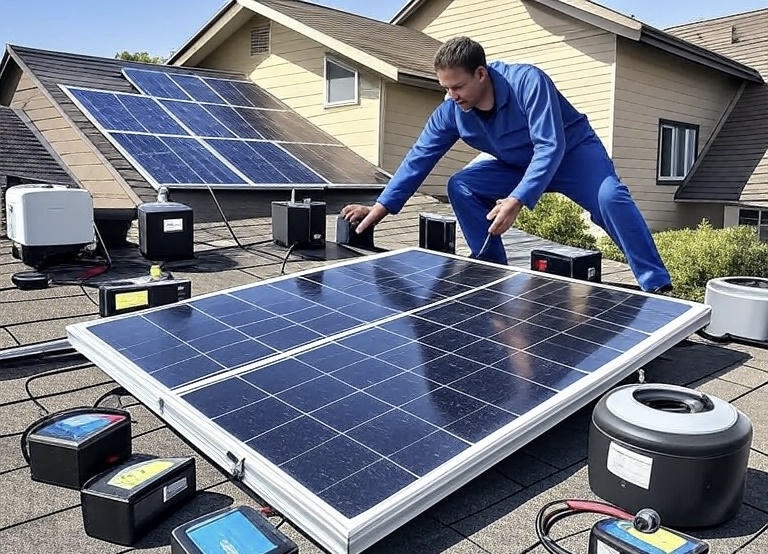Your Guide to DIY Solar Panels and Renewable Energy
The transition to renewable energy is gaining momentum as individuals seek sustainable, cost-effective solutions to power their homes. DIY solar panels are a practical entry point for harnessing solar energy, offering both environmental and financial benefits. This guide addresses common Green Energy FAQs: Your Guide to DIY Solar Panels and provides insights into renewable energy to help you embark on your green energy journey.
What Are DIY Solar Panels?
DIY solar panels are photovoltaic (PV) systems assembled by individuals using individual solar cells, wiring, and other components. Unlike pre-manufactured panels, DIY versions allow for customization and can be more budget-friendly, though they demand technical skills and time investment.
Is it practical to use separate controllers for charging and discharging in a PV system?
No, it’s usually not practical. A single charge controller efficiently handles both charging and discharging, reducing complexity and cost. Separate controllers are rarely needed unless specific load or battery requirements demand it.
How can DIY enthusiasts safely implement renewable energy solutions at home?
DIY enthusiasts can implement renewable energy by assessing energy needs, choosing suitable technology (e.g., solar), complying with local regulations, using quality components, prioritizing electrical safety, starting with small systems, installing correctly, and maintaining regularly. Consult professionals for complex tasks.
How much do solar installers charge per panel?
Solar installers charge $625 to $1,800 per 250- to 400-watt panel, including equipment and labor, before tax credits. DIY panel costs range from $188 to $600, excluding installation. Prices vary by location and roof complexity. Get multiple quotes for accuracy.
Why do I need help with solar energy licenses for my home project?
Assistance ensures compliance with local regulations, simplifies complex paperwork, meets building codes, secures utility approvals, avoids penalties, and qualifies you for incentives like the 30% federal tax credit.
Will solar energy become more affordable as battery prices drop?
Yes, decreasing battery prices lower the cost of solar-plus-storage systems, making solar energy more affordable. Cheaper batteries improve energy storage and management, enhancing solar’s value for homeowners.
How reliable is solar power for off-grid homes and industries?
Solar power is reliable for off-grid use if properly sized with adequate panels and batteries, maintained regularly, and paired with efficient appliances. Homes need 5-10 kW systems, while industries require larger setups with backups. Reliability depends on location, weather, and system design, but improving battery tech enhances performance.
How long can an off-grid solar system run with panels, batteries, and inverters?
An off-grid solar system can run indefinitely if daily solar generation (e.g., 5-10 kW panels) matches or exceeds energy use, with batteries (20-40 kWh for homes) covering nights or cloudy days (1-3 days). Runtime depends on consumption, battery size, and sunlight. Efficient appliances and backups extend reliability.
Are there more efficient ways to store renewable energy than lithium-ion batteries?
Alternatives like flow batteries, solid-state batteries, and gravity storage offer advantages for specific uses. Flow and gravity systems suit large-scale storage, while solid-state batteries promise safer, compact home solutions. Most are commercially available or nearing mass production by 2028, with costs dropping rapidly.
Can I install solar panels myself?
Yes, DIY solar installation is possible for small, off-grid systems if you have electrical and roofing skills. It saves on labor costs but requires permits, safety precautions, and proper tools. For grid-tied or large systems, professional help is recommended for safety and compliance. Read our Ultimate Guide to DIY Solar Panel Installation at Home
Final Thoughts
DIY solar panels are an accessible way to dive into renewable energy, offering savings and a hands-on learning experience. While they require effort and care, the rewards include lower energy bills and a reduced environmental impact. For larger systems or grid integration, consult professionals to ensure compliance and safety.


